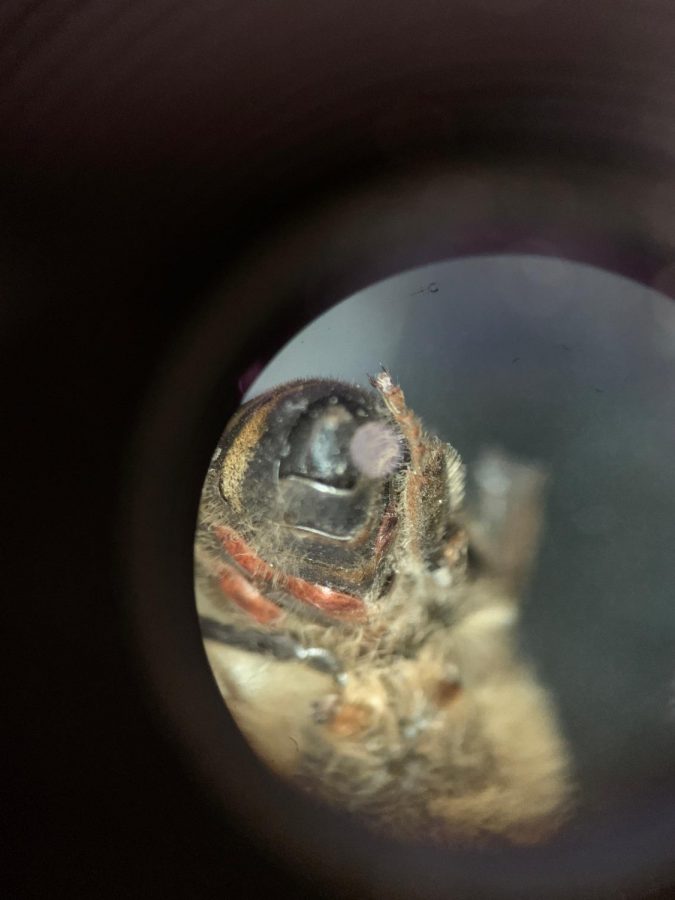PA’s bees sadly die despite conservation efforts
March 5, 2020
By Kendall Peterson
When junior Alyssa Perez heard about the bees dying at PA over winter break, she felt heartbroken and sad since it was the first hive at PA and the Bee Club had put a lot of effort into maintaining it.
IT specialist Steve Delaney, who is active with the bees said, “The hive was very healthy. They were making honey, and they were building very strong-looking honeycombs,” until they died.
Senior Rita Yohe said, “When a bee dies, the other bees take it to the edge of the hive and leave them there and then when they dry up, then the bees would take them and get rid of them, so we saw a lot of dead bees, sitting on the edge of the hive and on the ground.”
In her opinion, Perez thinks “it was CCD because our weather fluctuates so much, and also because it’s a new hive, that could have been an issue. Another possibility is that our queen might have left, which is kind of hard because we never really marked the queen.”
Delaney believes “it was because of an infestation of a mite [called the varroa mite] that only attacks only beehives,” which beekeepers also call the varroa destructor. This mite makes the hive more susceptible to infections as well.
According to Delaney, a record number of beehives were destroyed due to the varroa mite.
Delaney actually saw evidence of mites on a dead bee he looked at under the microscope.
“We also suspect that any of the bees that didn’t die just left the hive and went to find another hive,” said Yohe.
In an attempt to ensure this does not happen again, Perez is planning on “getting a new type of hive that prevents any type of disease and beetles. We sprayed the hive with mineral mist to avoid mites, but that does not really count for the hive beetles who eat from the inside out.”
“We’ll take the hive completely a part, we’ll clean off all the old honeycomb and all the material that’s in there and we will put the frames in the freezer for a determined amount of time to make sure that anything remaining be completely gone,” said Delaney.

Another way the Bee Club can help prevent the bees from dying again is “feeding more often because when we were feeding them, they weren’t really eating it,” said Perez.
“We’re going to also redesign part of the hive where the bees go in and out that we think will help also,” said Delaney.
Next year, there will also be two brand-new hives, instead of only one.
For the meantime, however, “we’re focused more on our outreach opportunities with the West Building and our ‘Bee Kind’ boxes, which really just tie together our main building and the West Building, but we’re also looking for opportunities to extend our bee life expectancy,” said Perez.
To help this problem, there is a Slovanian type of hive known for its insulation, while keeping the hive cool, according to Perez. It is pretty expensive, however, so a grant may be necessary to get it.
While the Bee Club is preparing for next year, it is wrapping up this year by “working more on the ethical and social side of what bee club is all about. We focus a lot on trying to raise awareness for the environment in general. We’re raising awareness for how the environment would be affected,” said Perez.
Overall, said Yohe, “We’re trying to be more of a social impact as well as an environmental impact, so we’re just being nice and trying to raise awareness while we’re waiting for our bees to come back.”




